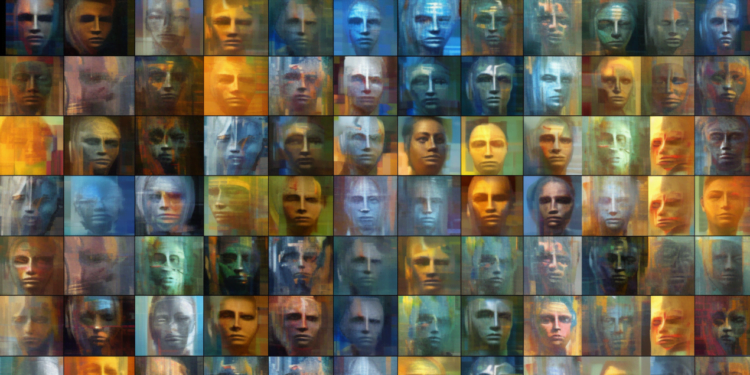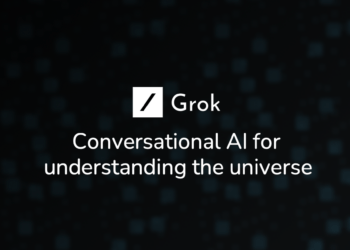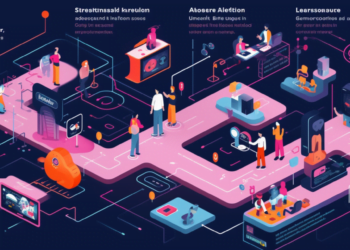Introduction to Generative Adversarial Networks (GANs): Fundamentals and Applications
Generative Adversarial Networks (GANs) are among the most exciting technologies in today’s Artificial Intelligence (AI) landscape. This technology has become an exceedingly popular research topic due to its wide applications in areas such as machine learning, image processing, natural language processing, and content generation. GANs have been used to create realistic visual content, such as images of people, animals, and landscapes, and have also been utilized to enhance image quality, including focus and brightness.
In this guide, we will explain the basics of GANs and how they can be applied to different fields. The guide will also provide practical tips, useful tools, and best practices to help readers gain a better understanding of this subject.
What are Generative Adversarial Networks (GANs)?
GANs are a type of deep neural network used to generate content from input data. These networks consist of two parts: a generator and a discriminator. The generator creates content from input data, while the discriminator attempts to distinguish between generated content and real content.
The generator’s goal is to produce realistic content that fools the discriminator. On the other hand, the discriminator aims to identify generated content to prevent being tricked by the generator. The ultimate goal of the GAN is to train the generator to produce realistic content that the discriminator cannot differentiate from actual content.
Applications of GANs
GANs have been utilized for a variety of applications, including machine learning, image processing, natural language processing, and content generation.
Machine Learning: GANs have been used to enhance machine learning algorithms’ performance. This is achieved by creating synthetic data to train machine learning algorithms. Synthetic data can help algorithms improve their performance by providing more data for training.
Image Processing: GANs have also been used to improve the quality of images. This is accomplished by using GANs to generate realistic content to fill gaps in images, which can help to enhance focus, brightness, and other aspects of the image.
Natural Language Processing: GANs have also been instrumental in increasing the accuracy of natural language processing. This is achieved through GANs’ capabilities to generate realistic content for training natural language models, thereby helping these models to improve accuracy by providing more data for training.
Content Generation: GANs have also been used to generate realistic content from input data. This is done by employing GANs to create visual content that is convincingly lifelike, such as images of people, animals, and landscapes. The technology has also been employed to generate textual content, such as poetry, short stories, and speeches.
Practical Tips for Using GANs
Here are some practical tips for using GANs:
• Use optimization techniques to enhance your GAN’s performance. These techniques include using optimization methods such as stochastic gradient descent and momentum gradient descent. These techniques can help improve your GAN’s performance by allowing the generator and discriminator to learn more efficiently.
• Employ regularization techniques to prevent overfitting. Regularization is a method used to limit the growth of model parameters to avert overfitting. This technique can help enhance your GAN’s performance by reducing the risk of overfitting.
• Utilize information exchange techniques to better your GAN’s performance. Such techniques involve sharing information between the generator and discriminator, which can aid in enhancing your GAN’s performance as both parts exchange insights.
• Apply unsupervised optimization techniques to boost your GAN’s performance. Unsupervised optimization methods are used to optimize model parameters without needing labels or training data. These methods can assist in enhancing your GAN’s performance by enabling the model to learn from input data without labels.
• Employ deep learning techniques to improve your GAN’s performance. Deep learning methods are utilized to augment the performance of deep neural network models. These methods can help enhance your GAN’s performance, allowing the model to learn from input data more efficiently.
Useful Tools for Using GANs
Below are some useful tools for using GANs:
• TensorFlow: TensorFlow is an open-source tool for deep neural network development. It is used to train and evaluate deep neural network models, like GANs, and is one of the most popular tools for deep neural network development.
• Pytorch: Pytorch is an open-source tool for deep neural network development. It is used for training and evaluating deep neural network models, such as GANs, and is one of the favored tools for deep neural network development.
• Keras: Keras is an open-source tool for deep neural network development. It is used to train and evaluate deep neural network models, like GANs, and is widely recognized as a leading tool for deep neural network development.
• TorchGAN: TorchGAN is an open-source tool tailored for deep neural network development, particularly for GANs. It is used for training and evaluating deep neural models and is renowned within the community for deep neural network development.
Best Practices for Using GANs
Below are some best practices for using GANs:
• Use a large and varied training dataset — large and diverse training datasets can improve your GAN’s performance by providing more data for training and also help boost model accuracy by allowing the model to learn from a broader array of data.
• Employ regularization techniques to avert overfitting — limiting model parameter growth through regularization can enhance GAN performance and reduce overfitting risks.
• Apply information exchange techniques to improve GAN performance — facilitating better performance through the sharing of insights between the generator and discriminator can be quite beneficial.
• Implement unsupervised optimization techniques to better GAN performance — optimize model parameters through unsupervised methods and enhance performance without relying on labels or training data.
• Use deep learning techniques to boost GAN performance — deep learning strategies can refine deep neural network models, assisting your GAN to learn from input data in an effective manner.
Conclusion
Generative Adversarial Networks (GANs) are a fascinating realm within Artificial Intelligence. These networks have been harnessed for various applications, from machine learning and image processing to natural language processing, and content generation. This guide offered practical tips, useful tools, and established best practices to aid readers in deepening their comprehension of this topic. If you wish to learn more about GANs, explore the provided links in this guide.






















